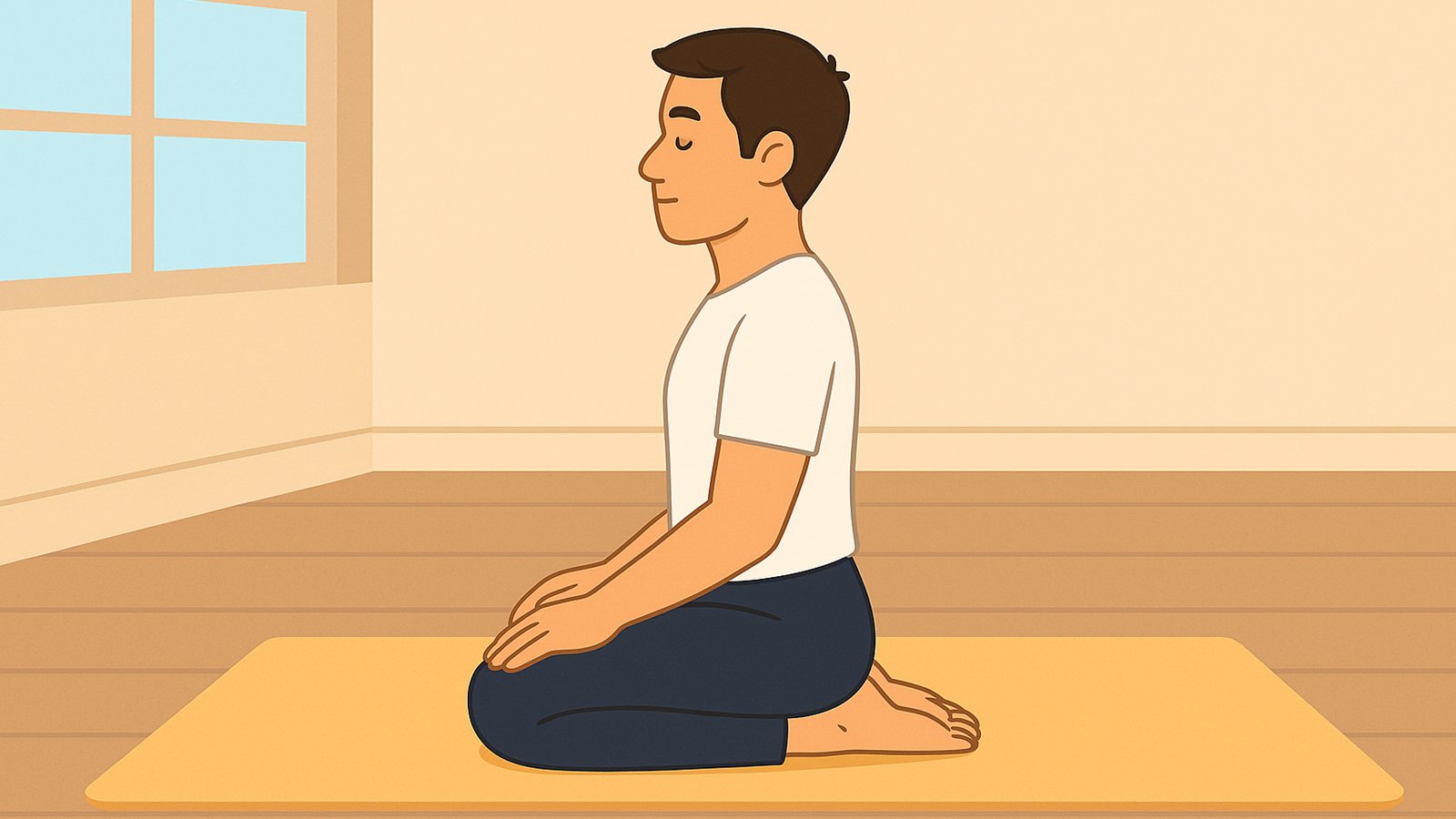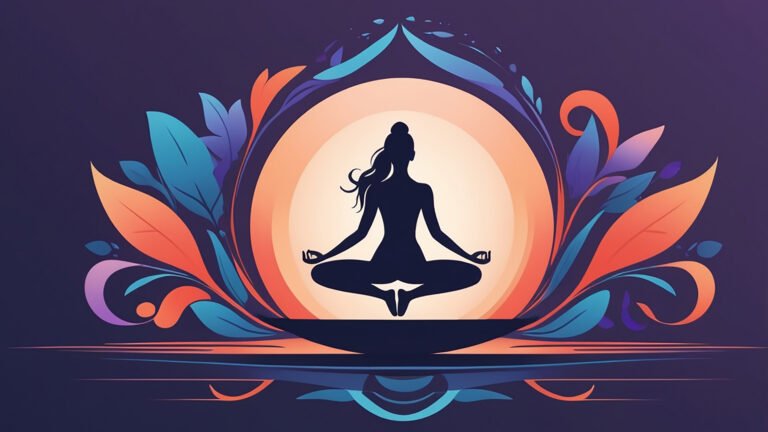— Introduction —
Vajrasana (वज्रासन), also known as the Thunderbolt Pose or Diamond Pose, is a foundational seated posture in yoga. Unique among asanas, Vajrasana is often practiced immediately after meals due to its beneficial effects on digestion. It is also commonly used as a base posture for meditation, pranayama, and other seated practices. The pose promotes calmness, stability, and internal focus.
— Step-by-step Instructions —
- Begin by kneeling on the floor with your knees close together.
- Ensure that the big toes are touching while the heels remain slightly apart.
- Gently lower your hips and sit down so that your buttocks rest comfortably between the heels.
- Place your palms on your knees, keeping your spine upright and body relaxed.
- If using this pose for meditation, close your eyes and breathe naturally, taking slow, deep inhalations and exhalations.
- You may also choose to focus your internal gaze (drishti) at the space between the eyebrows for deeper concentration.
- When used for internal cleansing or purification, Vajrasana can be combined with Nauli (abdominal churning) and Bandhas (yogic locks) for enhanced benefits.
— Physical Benefits —
- Improves digestion and relieves acidity and constipation
- Strengthens pelvic muscles and tones lower body organs
- Aids in reducing belly fat and improving posture
- Supports knee and ankle flexibility over time
— Mental & Emotional Benefits —
- Calms the nervous system and reduces stress
- Encourages grounding and inner stillness
- Prepares the body and mind for meditation and breath control
— Precautions to keep in Mind —
- Avoid Vajrasana if you have severe knee or ankle pain, arthritis, or recent leg injuries.
- Those with spinal issues or herniated discs should consult a physician or yoga expert before practicing.
- Pregnant women should modify the posture or consult a qualified instructor.
- Do not strain your knees; use support like a cushion or folded blanket if needed.
— Beginner’s Tips —
- Use a folded blanket or cushion between the heels and hips for added comfort and support.
- Practice after meals for 5–10 minutes to improve digestion.
- Keep your spine naturally upright, not overly stiff.
- If sitting too long causes numbness, stretch your legs gently afterward.
— Best Time to Practice —
- Immediately after meals – especially lunch or dinner – to aid digestion.
- Also suitable during morning or evening sessions for meditation, mantra chanting, or pranayama.
- Can be used throughout the day as a calming posture.
— Advanced Variations —
- Supta Vajrasana (Reclined Thunderbolt Pose): Lie back while keeping the legs in Vajrasana. It gives a deep stretch but requires flexibility in the knees and spine.
- Parvatasana in Vajrasana: Raise the arms overhead and interlace the fingers, turning the palms upward to stretch the upper body while seated.
- Kapalbhati or Anulom Vilom in Vajrasana: Practicing pranayama while seated in Vajrasana enhances its calming and digestive benefits.
— Wrapping Up —
Vajrasana is a simple yet powerful posture that brings both digestive health and mental stillness. It is especially unique as it is safe to practice after eating and provides a stable base for breathwork and meditation. Regular practice of Vajrasana helps to develop patience, inner awareness, and improved body-mind coordination. For beginners and seasoned practitioners alike, Vajrasana is a vital part of a holistic yoga practice.


